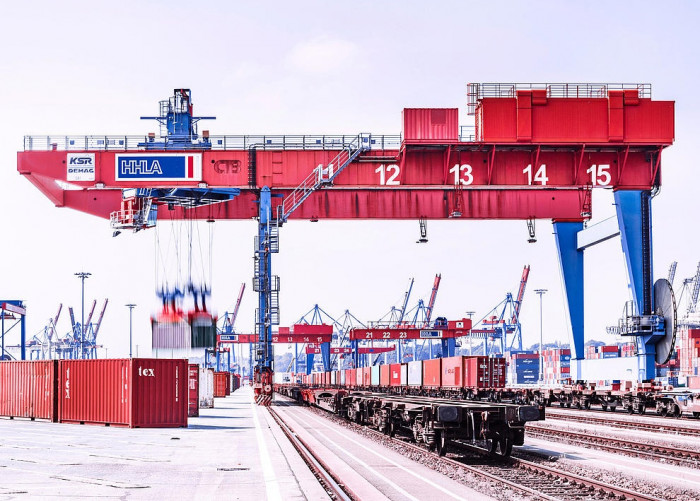
The deals that were implemented in the container market of Ukraine this year are analyzed by Oleksandr Stepaniuk from UNI-LAMAN GROUP.
This year, the Ukrainian container market received two strong impulses. Firstly, Hamburg-based HHLA is entering a terminal in Transcarpathia, which will operate as HHLA Eurobridge Batiovo together with METRANS. Secondly, Medlog (MSC) is investing in land intermodal infrastructure - shares in N’UNIT and the Mostyska terminal.
The Center for Transport Strategies spoke with Oleksandr Stepaniuk, Commercial Director of UNI-LAMAN GROUP, about what the arrival of such players means, what changes they will bring to the Ukrainian market and how the industry will develop in the coming years.
What does this mean for the container transportation market?
These agreements are a clear signal of the adaptation of the Ukrainian logistics market to new challenges. They emphasize the increasing variability of transport solutions across the western borders, not only for containers, but also for all types of cargo. The western direction is becoming a key "growth point". The involvement of global players such as HHLA and Medlog (MSC) significantly increases business confidence in these routes. This stimulates the demand for alternative logistics solutions, opening the way for innovation and sustainable supply chains. For example, the volume of container shipments across the western borders has increasedis by 25% in January-August 2025, despite the general reduction of the market.
Will new cargoes come along with large players?
You should not expect an instant increase in new cargoes just because of their appearance. The market dictates the rules of economic feasibility: if the route through Ukraine turns out to be profitable - with optimal costs and risks - then the flows will go. Political and economic stability remain decisive. Large operators are creating the infrastructure foundation, but real traffic will depend on the overall attractiveness of Ukraine as a logistics partner for global business.
Does this mean increased competition and how can smaller companies survive now?
Competition is fuel for development, not a threat. It forces everyone to look for more effective solutions, optimize processes and improve service. The entry of giants raises standards, encouraging smaller players to be flexible: focus on niches, such as specialized deliveries or personalized services that are difficult to copy. Small companies are already adapting, for example, through partnerships with UZ for the "last mile". As a result, the market wins - customers receive higher quality, and Ukrainian logistics becomes more competitive on the international stage.
How will the price and delivery times change?
Significant momentary fluctuations in price or terms should not be expected. New investments will have a greater impact on the stability and predictability of transportation than on radical cheapening. The cost of logistics will always depend on the cost of infrastructure, geopolitics and energy factors. But business will gain greater confidence in the reliability of the service.
Does this give hope for the restoration of transit if large players act as guarantors of security?
Unfortunately, there are no optimistic forecasts for transit here. It is tied to geopolitical stability, not to terminal investments. No operator can guarantee security - it is a matter for states. The HHLA and MSC agreements are focused on Ukrainian exports/imports, and transit flows from Asia to Europe will remain limited without full port unblocking and clear guarantees. Transit in 2025 is only 10-15% of the pre-war level.
Will this contribute to the return of calls by ocean container carriers of large container lines?
It is too early to dream about this - ocean lines need full port unblocking and security guarantees. Land investments are a forced alternative that redistributes flows to rail and road. It serves as a "lifeline" for business, and may indicate, on the contrary, the impossibility of recovery at the moment. For example, large lines like Maersk have already redirected 80% of their traffic through Romania/Bulgaria and do not even intend to resume full-fledged operations in Ukraine. The return of giants like Maersk is possible only with the restoration of calm in maritime logistics.
Where is the construction of new multimodal terminals potentially possible?
The most promising direction is the western borders, where export and import flows intersect, forming a "logistics gateway" to Europe. We expect expansion in Lviv and Zakarpattia regions: modernized transshipments, digitalization and integration with the EU. Pilot projects have already been launched in Mostyska in 2025. This will create an ecosystem where cargo quickly "jumps" between transports, making Ukraine part of the European network.
What do you see container logistics in Ukraine in the coming years?
It will be like a roller coaster - it will depend on political and security stability. Flows are already shifting westward, and investors are strengthening these routes through modernization and partnerships. With stability and victory, Ukraine can become a hub between the EU and Asia, but for now, businesses need to maneuver in uncertainty: diversify, be flexible, and look for opportunities in challenges.




